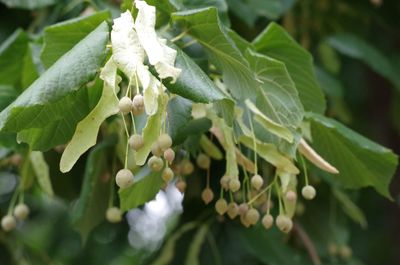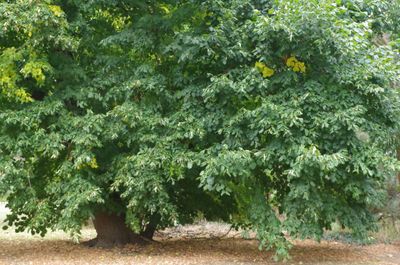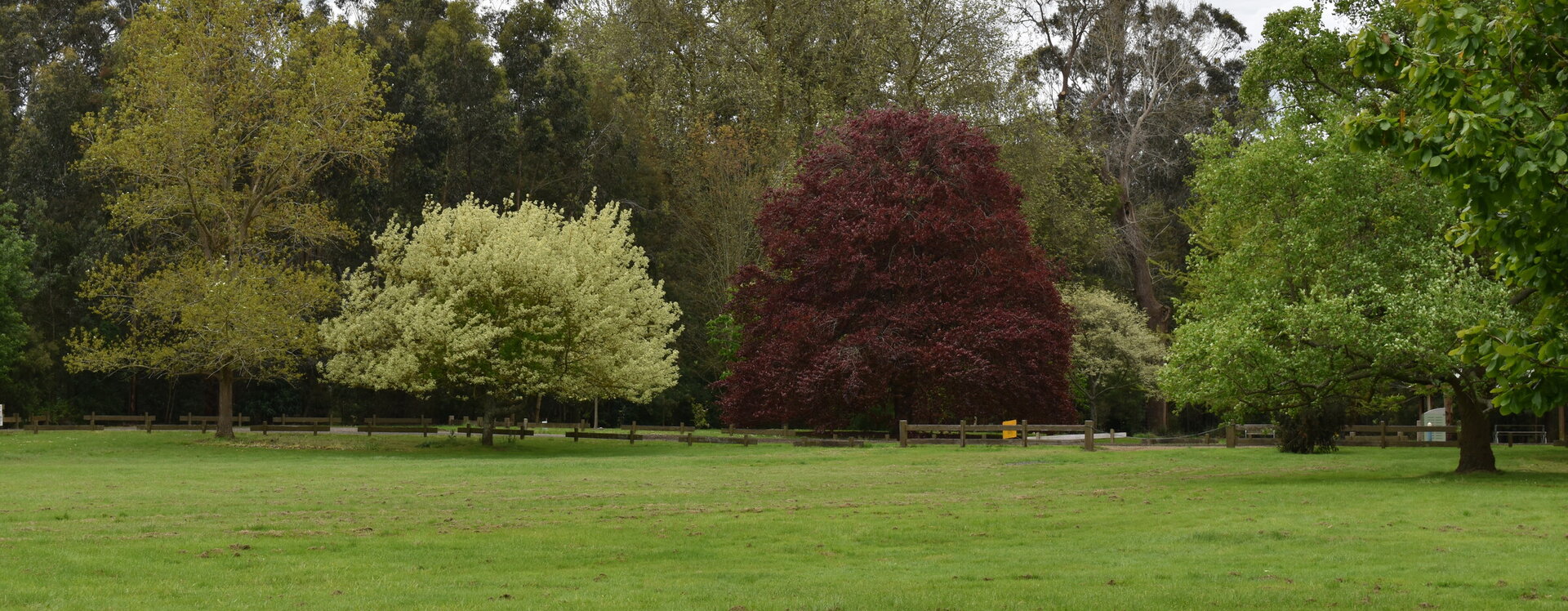





Tilia platyphyllos
Tilia
Tilia platyphyllos, common name large leafed linden, is a narrowly domed tree with a moderate growth rate, and can eventually attain a height of 40 m. The specific epithet platyphyllos (greek: πλατύφυλλος) means "with broad leaves". The reddish-brown young stems later develop dark grey bark with fine fissures and furrows. The branches spread upwards at wide angles. The twigs are reddish-green and slightly pubescent. The foliage consists of simple, alternately arranged leaves. As indicated by its common name, this tree has larger leaves than the related Tilia cordata (small-leaved lime), 6 to 9 cm (exceptionally 15 cm). They are ovate to cordate, mid to dark green above and below, with white downy hair on the underside, particularly along the veins, tapering into a mucronate tip. The margin is sharply serrate, and the base cordate; the venation is pinnate along a midrib. The pubescent petiole is usually 3–4 cm long, but can vary between 1.5–5 cm. The autumn foliage is yellow-green to yellow. The small, fragrant, yellowish-white flowers are arranged in drooping, cymose clusters in groups of 3 to 4. Their whitish-green, leaf-like bracts have an oblong-obovate shape. The geniculate peduncles are between 1.5–3 cm long. The hermaphroditic flowers have 5 sepals and 5 tepals, numerous stamens, but no staminodes. The superior ovary is 2–10 locular with a smooth style. The fruit is a fat, round, tomentose, cream-colored nutlet with a diameter of 1 cm or less. It has a woody shell with 3–5 ridges.
147.00 Location C2 Latitude; -38.402182684164 Longitude; 146.051274734644

